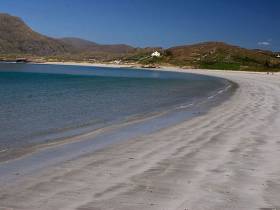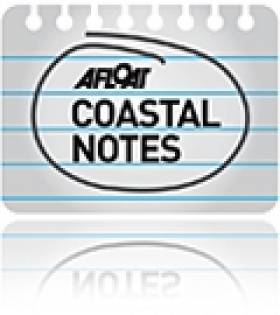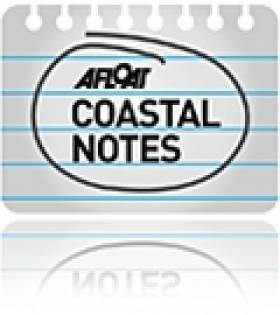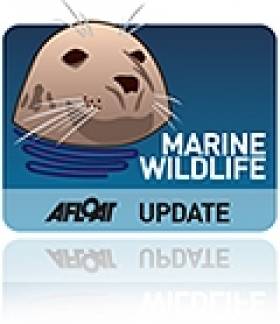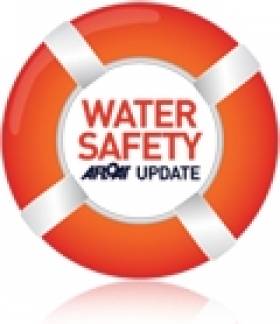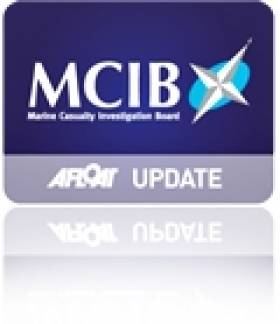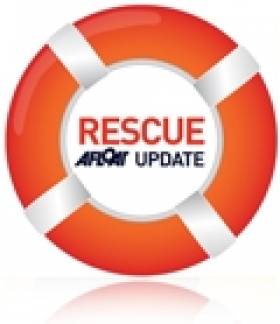Displaying items by tag: Kilkee
Coastguard In Medevac From Irish Fishing Vessel
#Coastguard - Shannon's Irish Coast Guard helicopter was launched yesterday afternoon (Tuesday 14 June) to evacuate an injured crewmember from an Irish fishing vessel off the Kerry coast.
Top cover was provided by a second coastguard helicopter as Rescue 115 flew to the boat 120 miles west of the Blasket Islands to recover the injured party for treatment.
In another incident, coastguard volunteers recovered the body of a man from the base of the Cliffs of Moher last night, as BreakingNews.ie reports.
Units from Doolin and Kilkee responded when the alarm was raised around 5pm yesterday, eventually lifting the body to the cliff top four hours later. Gardaí are investigating.
Body Recovered From Sea Off Clare Beach
#Kilkee - BreakingNews.ie reports that the body of a young man was recovered from the sea off Kilkee in Co Clare yesterday morning (Monday 6 June).
It's believed that the 22-year-old man from north Cork may have fallen into the water during the previous night.
The tragic news came just hours after a man was airlifted to hospital following a cliff fall near Lahinch on Sunday morning (5 June), as previously reported on Afloat.ie.
Funding Allocated for Works at Kilkee Pier & Slipway
Clare County Council today confirmed the Department of Agriculture, Food & the Marine has approved its application for funding for coastal infrastructure work improvements at Kilkee, Co Clare.
The Local Authority says the funding will go towards providing a new entrance to the slipway and pier area in Kilkee.
Cyril Feeney, Area Engineer, West Clare Municipal District, commented: "This proposed new entrance will address a long standing issue of access to the pier and slipway area through the existing overhead barriers at the East End car park, whilst also separating the marine and leisure boating activity from the general car parking area."
"These proposed works, which have been discussed with Elected Members, Kilkee Development Association and users of the pier, will allow for controlled access to the pier and slipway and also provide additional security to the area with the installation of CCTV and lighting," he added.
Weather permitting, Clare County Council anticipates that the proposed works will commence in the next fortnight.
Search Stood Down For Missing Japanese Tourist
#Missing - Rescue services have formally stood down their search for a missing Japanese tourist off Co Clare after three weeks, the Irish Examiner reports.
As of yesterday (Tuesday 15 September) there has been no sign of Ushio Azaki (61), who went missing in Kilkee on 22 August with her companion Eiji Takagi (63), whose body was found by divers on 30 August.
Pollock Holes Are 'Eighth Wonder Of The World' Says Kilkee Diver
#PollockHoles - Kilkee personality Manuel Di Lucia takes The Irish Times's Lorna Siggins on a tour below the depths to see the renowned Pollock Holes, a unique marine environment on the Irish coastline that he believes deserves special protection.
The collection of tidal ponds in the reef off Kilkee in Co Clare have been described as a "rich ecological resource" and by local diving enthusiast and restaurateur Di Luca as 'the eighth wonder of the world'.
But while the National Parks and Wildlife Service confirms that the pools are within the Special Area of Conservation designated for Kilkee's reefs, De Lucia says there is nothing to stop anyone poaching shellfish for commercial purposes.
The Irish Times has more on the story HERE.
Kilkee In Limbo Over Finding For Storm Repairs
#CoastalNotes - The Irish Times reports on uncertainly over State funding for repair works to Kilkee's promenade.
Four months after the seaside town – promoted as part of the Wild Atlantic Way initiative - was devastated in the last of the winter's extreme storm period, the roadway and a section of beach below the Strand Line are still fenced off, though repairs have been made to sea walls and pavements.
However, Clare County Council says it is unclear whether Government funding will be forthcoming for the remaining works.
As previously reported on Afloat.ie, €16.8 million was allocated in February to the council for storm-related repairs after January's extreme weather - but the damage to Kilkee, which occurred later, is not covered by this funding.
The Irish Times has more on the story HERE.
Kilkee Kids Free Dolphin From Shallows
#MarineWildlife - The coastguard were beaten to the punch by a group of children who helped a stranded dolphin back into open water in Co Clare, as TheJournal.ie reports.
Kilkee Coast Guard were dispatched after reports that the striped dolphin was trapped in the shallow rock pools at Kilkee Beach, but the unit arrived on scene just in time to see the cetacean swim away unscathed.
The Irish Whale and Dolphin Group's Dr Simon Berrow confirmed to TheJournal.ie that locals had seen a number of other dolphins swimming in the area, at least one of which almost became stranded in shallow water.
Rugby Star's Cousin Knocked Out In Diving Accident
#WaterSafety - Herald.ie reports that a young cousin of rugby international Jonny Sexton was "shocked but recovering well" after she was knocked out in a diving accident last week.
Fourteen-year-old Kelly Sexton was diving with friends off a 50-foot ledge at Diamond Rocks in Kilkee, Co Clare to celebrate her birthday when she apparently struck the water at an angle that rendered her unconscious.
Thankfully her friends came to her aid immediately and cared for her until she was airlifted to University Hospital Limerick by the Shannon coastguard rescue helicopter.
The incident came on the last weekend of the nationwide heatwave that saw a shocking 10 drownings around the island of Ireland.
Lack of Planning, Safety Gear Instrumental in Donegal Point Drowning - MCIB
#MCIB - The Marine Casualty Investigation Board (MCIB) has reiterated the importance of forward planning and safety before going on the water after the drowning of a man off Donegal Point in Co Clare on 5 November last year.
The official report into the death of Latvian national Armandas Silins (52) found that he had gone out into the water in a remote area off Kilkee in a small inflatable dinghy with no safety or communications equipment.
It was established that Silins, who had been living in the Kilrush area for around a decade, had owned the dinghy for some time but there was no evidence that he had ever used it to fish.
It was also found that he had not informed any third parties of his plans for that day.
Local man William Ryan spotted Silins in the dinghy in rough seas close to an enclosed bay known as the 'Horseshoe'.
Ryan took photographs of Silins - included in the report - moments before the dinghy capsized. He immediately raised the alarm and kept in contact with the Kilkee Coast Guard Unit while Silins was in the water trying to hold on to his dinghy.
By the time a coastguard rescue team arrived in the area, Silins had become separated from the dinghy, and his body was located nearby shortly afterwards.
The MCIB report found that it was "fortuitous" that William Ryan had been in the area to observe Silins in the water and contact emergency services.
It concluded: "The circumstances attending the incident were tragic in the extreme but avoidable."
The full report on the Donegal Point incident is available to download via the link below.
Teen Injured in Water at Kilkee Pier
#RESCUE - A teenage boy was airlifted to hospital yesterday after an incident at Kilkee Pier in Co Clare.
The 17-year-old, understood to be from Limerick, sustained a serious injury after diving from the pier into shallow water.
The Irish Coast Guard station at Valentia Island co-ordinated the recovery effort, with the local coastguard and paramedics sent to the pier after the alarm was raised at lunchtime yesterday.
As The Irish Times reports, the new Shannon rescue helicopter was also tasked to the scene amid concerned that the teen had injuries to his head, neck and back.
Rescuers waded into the water to recover the young man, who was treated at the scene for a serious head wound before being driven to the local golf club to the makeshift helicopter landing spot, from where he was airlifted to Galway University Hospital for treatment, according to RTÉ News.
Kilkee Marine Rescue Service chairman Manuel Di Lucia said that authorities "need to consider" the absence of a dedicated helicopter landing site in Kilkee closer to the pier.



























